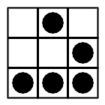 |
Bluebox |
I've long had an interest in how telephone systems work. I missed the
heyday of phone-phreaking. Documented here are my experiments and
tinkerings with blueboxes: devices intended to remotely manipulate
telephone systems. The switching equipment that were suceptible to such
manipulation aren't used any more for the regular telephone network.
Privately-owned telephone switching equipment has been modified by their
owners to allow for this sort of thing. Therefore these devices can no
longer be used for committing fraud or intrusion. Everything presented
here is for historical interest.
For more information about blueboxes and their history, see
https://en.wikipedia.org/wiki/Blue_box
Projects
-
Bluebox AVR
(https://gitlab.com/DavidGriffith/bluebox-avr)
-
This project implements a bluebox in C on AVR microcontrollers. This
project is roughly a reimplementation of Don Froula's PIC-based
bluebox, which was written in PIC assembly. The resulting compiled
program is intended to be loaded into one of the following circuit
boards. Currently the code implements a bluebox, silver box (DTMF
dialer with 4th column), redbox, greenbox, and 2600hz pulse dialer.
There are 12 memory locations of 41 keystrokes each.
Don Froula reviews the program on Youtube
-
Bluebox Esquire (documentation)
-
This circuit board was originally designed as a drop-in replacement for
Don Froula's board,
which was intended to replace the cover of a Radio Shack #270-1801
enclosure. With Radio Shacks closing everywhere, I picked a different and much nicer
enclosure, a Hammond 1591XXM,
and shrank the board slightly so it fit entirely inside. The original
board used a PIC 12F683 in an 8-pin DIP package. This one uses an
ATtiny85 in an 8-pin DIP package. The name of this project is a
reference to Don's original aim of replicating the look of the bluebox
presented in the October 1971 issue of Esquire Magazine. The buttons
are sensed through a resistor ladder which feeds a voltage into a single
pin which is then sampled.
If you have a version 4.0 board, you'll need this
errata sheet.
Buy one from me on eBay
For those who are having problems compiling the firmware, here are the
latest firmware and EEPROM images: bluebox.hex
bluebox.eep.hex. Fuse settings are
FUSE_L: 0xFF, FUSE_H: 0xDB, FUSE_E: 0xFF.
-
Bluebox KP (under development)
-
This circuit board project is a simplified bluebox design that omits the
keypad. Instead, a separate matrix keypad is plugged in as a daughterboard.
Both 3x4 and 4x4 variants are commonly available and supported.
-
Bluebox RS (under development)
-
This circuit board project is intended to transform a Radio Shack pocket
dialer (model 43-139) into a 12-key bluebox. Operation is exactly the
same as that of the Bluebox Esquire except that the 2600hz tone is generated
by pressing the star and hash keys at the same time. A surface-mounted AVR
ATtiny84 will be used for this one. Keys are detected through a matrix.
-
Bluebox Tiny (under development)
-
This circuit board project is essentially the Bluebox Esquire with all
parts being surface-mount.
Links
-
http://projectmf.org/
-
Don Froula's project to simulate a analog SF/MF telephone signaling just
as it was used in the telephone network of the 1950s through the 1980s.
It lets you "blue box" telephone calls just like the phone phreaks of
yesteryear ... except that it's totally legal!
-
http://explodingthephone.com/
-
Before smartphones and iPads, before the Internet or the personal
computer, a misfit group of technophiles, blind teenagers, hippies, and
outlaws figured out how to hack the world's largest machine: the
telephone system. Exploding The Phone is their story.
If you have any questions or comments, feel free to email me at
dave@661.org.
Back to Projects...
Back to Dave's homepage...
This page was last updated on July 8, 2018

